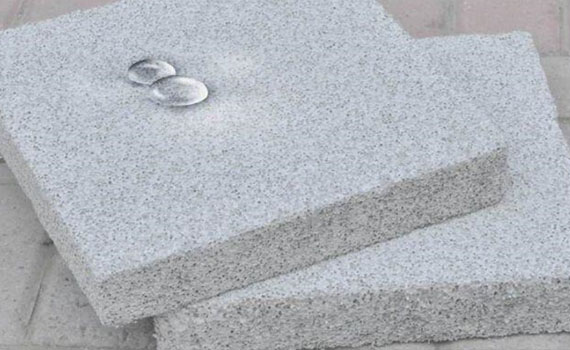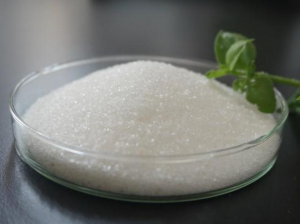Professional solutions on concrete addtives, Concrete Foaming Agent, Superplasticizer, CLC Blocks Additives, and foaming machine
(Polycarboxylic acid slump protection agent)
For a long time, the working performance and strength of concrete are closely related to the water-cement ratio. For example, the preparation of high-strength concrete usually needs to use low water-cement ratio, and the low water-cement ratio will inevitably lead to the decrease of concrete fluidity, which is not conducive to construction. The emergence of superplasticizer successfully alleviates the contradiction between concrete working performance and strength caused by water-cement ratio, which makes it possible for the prepared concrete to have good workability and high strength at the same time. Polycarboxylic acid slump-retaining agent is used more and more widely because of its advantages such as low content, high water-reducing rate, good slump-proof property, adjustable molecular structure and green environmental protection. Polycarboxylic acid slump-retaining agent is the first choice for preparing high performance concrete, such as ultra-high-distance pumping concrete, self-compacting concrete, high-strength concrete and so on.
Although polycarboxylate sloughing agent is more and more widely used, there are some problems in practical application, such as poor water-reducing and dispersion effect of polycarboxylate slump-retaining agent, abnormal condensation of concrete, excessive slump loss over time, and even the decrease of concrete strength, among which the compatibility between polycarboxylate slump-retaining agent and concrete raw materials is one of the main reasons. If the saturation mixing point of the superplasticizer is clear, the initial fluidity of the cement paste is good, the time loss is small, and there is no obvious bleeding and segregation, then it shows that the superplasticizer has good compatibility with cement. There are compatibility problems between polycarboxylic acid slump protection agent and various raw materials of concrete, which are mainly shown in the following aspects:
1 Cement.
When the same polycarboxylic acid sloughing agent is used but different cement is used, it is possible that this polycarboxylic acid sloughing agent has good compatibility with one kind of cement but poor compatibility with another cement, and when using the same kind of cement but different polycarboxylic acid sloughing agent, a similar situation may also occur, which is superficially caused by different kinds of cement and polycarboxylic acid sloughing agents, but its essence is related to its physical and chemical properties. For example, the mineral composition of cement clinker is the most important factor affecting its compatibility with polycarboxylic acid sloughing agent, which is mainly related to the adsorption of clinker minerals to polycarboxylic acid slump inhibitor. Aluminate phase hydration zone is more likely to absorb negatively charged polycarboxylic acid sloughing agent than silicate phase hydration zone. It is generally considered that the cement with higher C3A content and high crystallization degree has poor compatibility with polycarboxylic acid sloughing agent. In addition, the specific surface area of cement is also the reason that affects its compatibility with polycarboxylic acid slump protection agent. when the specific surface area of cement increases, the contact area between cement particles and water and polycarboxylic acid slump protection agent molecules increases, which leads to the increase of surface energy. the hydration rate of cement is accelerated and the adsorption is enhanced, which will lead to greater loss of cement slurry over time and poor compatibility.
2 Mineral admixture.
Industrial solid wastes such as fly ash, slag and silica fume, as concrete admixtures, not only play a role in green environmental protection, but also are indispensable raw materials for the preparation of high performance concrete from the technical level. The compatibility between mineral admixtures and polycarboxylic acid sloughing agents is mainly caused by the adsorption of polycarboxylic acid sloughing agents by admixtures. Granulated blast furnace slag and high-quality fly ash with more spherical vitreous bodies adsorb less polycarboxylic acid sloughing agents, so they have good compatibility. Carbon content is the main reason that affects the compatibility of fly ash and polycarboxylic acid slump inhibitor. Fly ash with high carbon content can absorb a large amount of polycarboxylic acid slump inhibitor and water, which makes it poor compatibility with polycarboxylic acid slump inhibitor. Because of its high specific surface area, silica fume can absorb a large number of polycarboxylic acid sloughing agents, which has poor compatibility with polycarboxylic acid sloughing agents.
3 other chemical additives.
The compounding of admixtures can play a super-superposition effect, which is more and more used in the field of concrete as a technical route. Sometimes only one kind of superplasticizer can not meet the construction requirements, so different superplasticizers are needed, and the adaptability of polycarboxylic acid slump retaining agent and other superplasticizer varies with other kinds of superplasticizer. Polycarboxylic acid slump retaining agent has good adaptability with lignin sulfonate superplasticizer, and its combined use with naphthalene superplasticizer will have a negative impact. In addition, there are compatibility problems between polycarboxylic acid slump protection agent and other admixtures such as early strength agent, retarder and expansive agent, especially the sulfate content and alkali content in the admixture have great influence on the compatibility.
4 Sand aggregate.
Sand and gravel aggregate has a direct influence on the properties of concrete, in which mud content is one of the main indexes to measure the quality of aggregate. Before the emergence of polycarboxylic acid slump protection agent, because the mud powder in sand and gravel had relatively little influence on the performance of concrete within the scope of the specification, it did not attract widespread attention. In recent years, with the increase of the amount of polycarboxylic acid slump protection agent, the natural sand resources with better quality are gradually in shortage. When preparing concrete with machine-made sand with high powder content and natural sand with high mud content, it shows that polycarboxylic acid slump protection agent is not compatible with it. The content of stone powder in machine-made sand has little effect on polycarboxylic acid sloughing agent, and it is generally considered that the content of stone powder in the range of 20% is even beneficial to the performance of concrete. Polycarboxylic acid sloughing agent is particularly sensitive to the mud content of sand and gravel. When the mud content of sand is high, it will seriously affect the water-reducing and dispersion performance of polycarboxylic acid slump-retaining agent, and will reduce the working performance and strength of concrete.
5 Sulfate and alkali content.
Sulfate in concrete mainly comes from cement clinker, admixture, admixture and gypsum which has retarding effect on cement. A large number of studies have shown that on the one hand, there is competitive adsorption between sulfate and polycarboxylic acid sloughing agent, which reduces the number of polycarboxylic acid sloughing agent that can disperse cement particles, on the other hand, the existence of sulfate will reduce the steric hindrance of polycarboxylic acid sloughing agent, thus affecting the water-reducing and dispersing performance of polycarboxylic acid sloughing agent. Kazuo Yamada et al found that the spatial volume of polycarboxylate superplasticizer molecules decreased with the increase of sulfate ion concentration in the solution, indicating that sulfate can affect its water-reducing dispersion performance by reducing the steric hindrance of polycarboxylate slump-retaining agent molecules. Wang Zhi and others found that different kinds of sulfates have different effects on the water-reducing dispersion properties of polycarboxylic acid sloughing agents, and the effects of potassium sulfate and sodium sulfate are greater than those of calcium sulfate. however, when the content of soluble sulfates such as potassium sulfate and sodium sulfate is low (less than 0.2% of the quality of cement), it has no negative or even beneficial effect on the water-reducing dispersion performance of polycarboxylic acid sloughing agent. At the same time, the type of gypsum has a great influence on the polycarboxylic acid slump protection agent, which mainly depends on the dissolution rate and solubility of different kinds of gypsum.
The alkali (Na2O and K2O) in concrete generally comes from clay raw materials and admixtures used in calcined cement clinker. With the increase of alkali content, when the concrete reaches the same fluidity, the water demand increases, the setting time shortens, the initial fluidity of concrete mixed with polycarboxylic acid slump protection agent decreases and the time loss increases.
Concrete Additives Supplier
TRUNNANO is a reliable concrete additives manufacturer with over 12-year experience in nano-building energy conservation and nanotechnology development.
If you are looking for high-quality concrete additives, please feel free to contact us and send an inquiry. (sales@cabr-concrete.com)
We accept payment via Credit Card, T/T, West Union, and Paypal. TRUNNANO will ship the goods to customers overseas through FedEx, DHL, by air, or by sea.
(Polycarboxylic acid slump protection agent)








